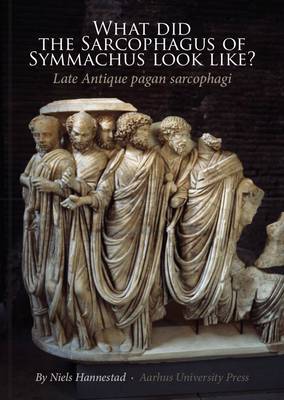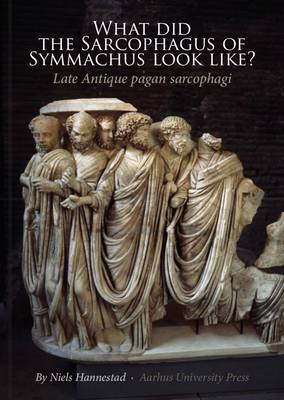
- Afhalen na 1 uur in een winkel met voorraad
- Gratis thuislevering in België vanaf € 30
- Ruim aanbod met 7 miljoen producten
- Afhalen na 1 uur in een winkel met voorraad
- Gratis thuislevering in België vanaf € 30
- Ruim aanbod met 7 miljoen producten
Zoeken
What Did the Sarcophagus of Symmachus Look Like?
Late Antique Pagan Sarcophagi
Niels Hannestad
Paperback | Engels
€ 25,45
+ 50 punten
Omschrijving
This book concerns the chronology of Roman mythological sarcophagi. The traditional chronology assumes a peak in production during the reign of Gallienus (AD 259-268) that fades away in the reign of Constantine. This chronology has some obvious flaws. The supposed peak under the reign of Gallienus, when the empire was falling apart, can only be described as a mirage. Some very fine sarcophagi were indeed produced in this period, but the number is very limited. With the reign of Constantine (AD 306-337) came wealth, and the so-called 'villa boom' that also revived sculpture in the round. At that time, it is believed that production of pagan sarcophagi had ceased to be replaced by Christian sarcophagi. This raises a very simple question, however: how were pagans buried? No doubt production of pagan sarcophagi continued beyond the turn of the century and Symmachus, who died in AD 402, was buried in such a sarcophagus.
Specificaties
Betrokkenen
- Auteur(s):
- Uitgeverij:
Inhoud
- Aantal bladzijden:
- 98
- Taal:
- Engels
Eigenschappen
- Productcode (EAN):
- 9788771847437
- Verschijningsdatum:
- 11/10/2019
- Uitvoering:
- Paperback
- Formaat:
- Trade paperback (VS)
- Afmetingen:
- 234 mm x 168 mm
- Gewicht:
- 276 g

Alleen bij Standaard Boekhandel
+ 50 punten op je klantenkaart van Standaard Boekhandel
Beoordelingen
We publiceren alleen reviews die voldoen aan de voorwaarden voor reviews. Bekijk onze voorwaarden voor reviews.











